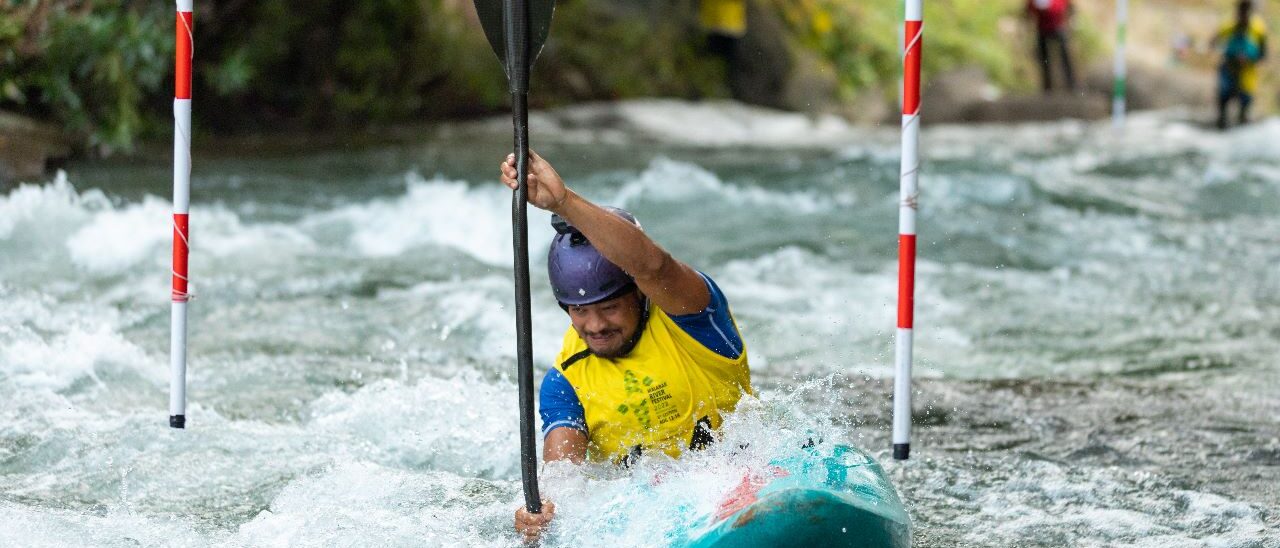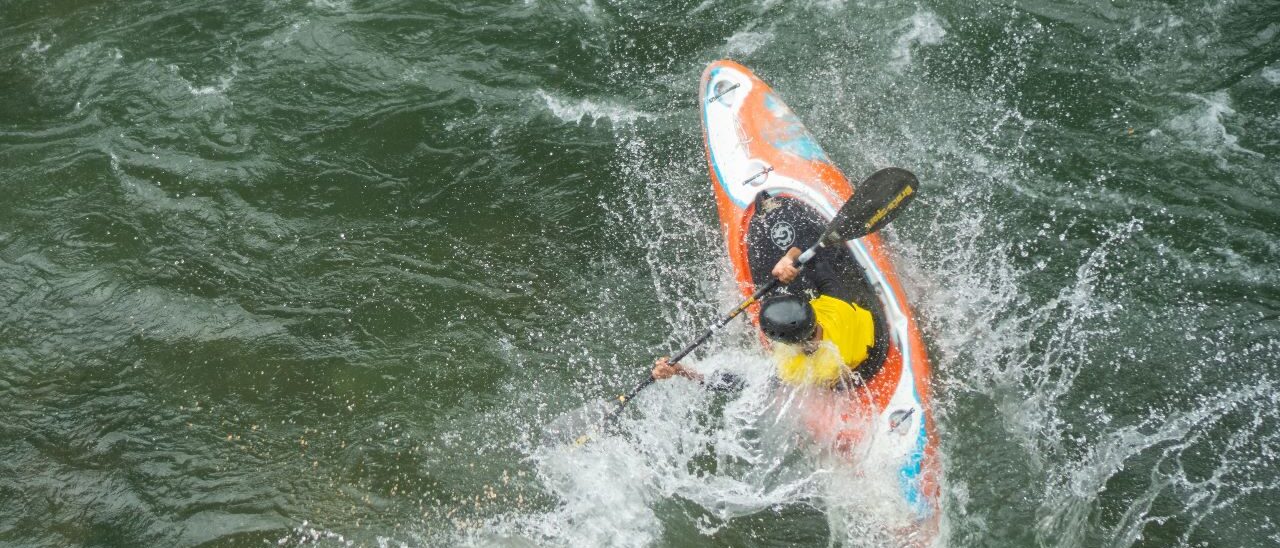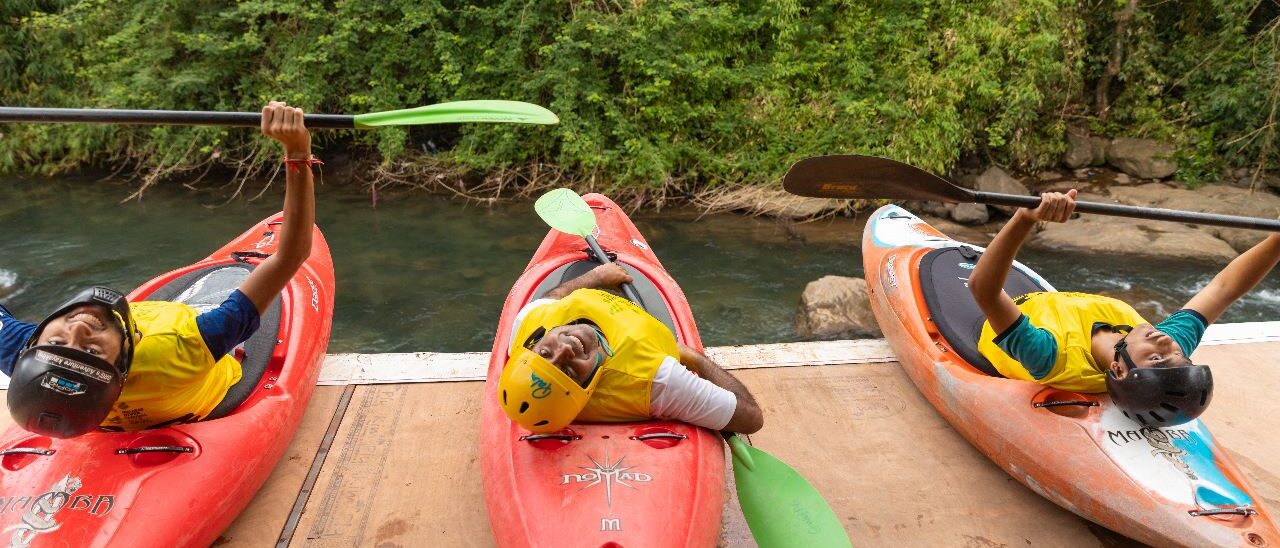Canoe Slalom originated in Europe. Although not a large part of competitive canoeing in India, Slalom has reached a good standard. Indian Championships are held in a different state every year on a cyclic basis, with the exception of South India due to its lack of whitewater. The inclusion of Slalom in the Barcelona and Atlanta Olympics has had a considerable influence on the development of Slalom and has help lift the standard in India. Slalom courses are typically around 500 metres long and consist of good white water with 25 gates suspended from wires across the river. A gate is a pair of poles hanging about 1 metre apart and must be negotiated in either the upstream or downstream direction depending on the colour of the poles. Upstream gates have red and white poles, whereas downstream gates have green and white poles. Each competitor”s time is recorded for the course and 5 second penalties are added to the time for each gate which was hit by the paddler, and 50 seconds added for each gate missed or incorrectly negotiated. Thus the essence of the sport is to negotiate the course of gates in the correct sequence without hitting the poles as fast as possible. This requires a great degree of skill and fitness. The kayaks and canoes which have evolved for canoe Slalom are very manoeuvrable, and are low in profile. This allows the end of the boat to pass under the poles with less chance of striking the pole and incurring a penalty.
Things you need to know
- Canoe slalom is a race against the clock through a combination of up and downstream gates on a whitewater course.
- The course length and number of gates varies with a maximum of 25 gates for Canoe & Kayak events and 8 gates for Kayak cross.
- The course is set with a mix of upstream and downstream gates; each presents a unique challenge for the athlete, significantly testing their ability to read and work with the water flow whilst maintaining their trajectory, balance and speed.
- The direction the athlete must travel through each gate is indicated by colour: red for upstream and green for downstream.
- Course designers set the gate patterns with the aim of utilising the water features – eddies, waves and stoppers – to create a competitive course. No two courses are the same.
- There are five events within Canoe and Kayak programme with both men and women contesting the kayak and canoe singles (WK1, MK1, WC1, MC1); there is also mixed canoe doubles (XC2). Kayak cross programme consists of women’s kayak (WX1) and men’s kayak cros (MX1).
- The Olympic Programme currently consists of four classes MK1, WK1, MC1 and WC1. Kayak Cross will make its debut at the 2024 Olympic Games in Paris.
- The difference between a kayak and a canoe is simple; it’s the number of blades on the paddle and the athlete’s position in the boat. In kayak, the paddler is seated and uses a double-bladed paddle pulling the blade through the water on alternate sides to propel the boat forward. In canoe, the paddle has a single-blade and the athlete is strapped into the boat with their legs bent at the knees and tucked under their body.


